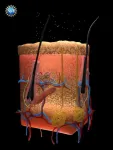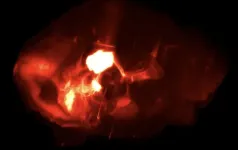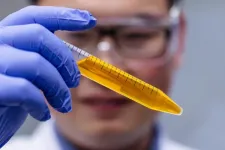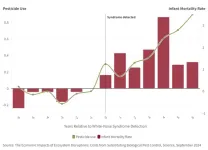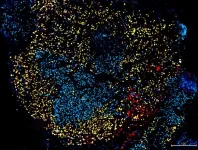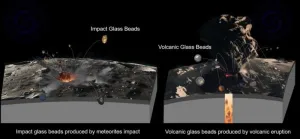(Press-News.org) Irvine, Calif., Sept. 5, 2024 — With newly awarded funding from the National Science Foundation, researchers at the University of California, Irvine and the Keck School of Medicine of USC will seek to revolutionize the treatment of neurological diseases through intelligent biocomputing. The four-year, $2 million grant is part of NSF’s Emerging Frontiers in Research and Innovation program, which funds cutting-edge science pushing the boundaries of human knowledge.
The premise of the UC Irvine-USC project is to combine engineering principles with stem cell research to treat damaged brain regions. The team’s long-term goal is to restore motor functions to patients who have suffered brain damage from a stroke or experienced other neurological problems.
“We believe that combining systems engineering and regenerative medicine might, with further research, help patients with neurological damage,” said Dr. An Do, associate professor of neurology at UC Irvine, who is the study’s principal investigator. “The program will support the scientific research necessary to establish the foundations for future patient-treatment applications.”
The idea behind the new research is to apply advanced biofabrication and adult stem cell technology to construct 3D neural networks in a way that emulates the self-learning mechanisms of the healthy brain. The team envisions that these intelligent networks can eventually integrate with the brain and body and be programmed to restore functions lost after an injury.
Do will oversee the project and lead bio-fabrication efforts. He will work with Zoran Nenadic, UC Irvine professor of biomedical engineering, who will handle the project’s neural signal processing and neural network training processes. Hung Cao, an associate professor of electrical engineering at UC Irvine, will address the project’s microfabrication and microelectronics engineering needs.
Leigh Turner, a professor of bioethics and public health at UC Irvine, will lead an exploration of the ethical, legal and social issues related to the project. Dr. Charles Liu, a professor of clinical neurological surgery, urology and surgery, and director of the USC Neurorestoration Center, will work directly with patients.
The UC Irvine-USC team has spent years developing brain-computer interfaces for neurorestoration, and in 2017 received an $8 million grant from NSF to expand that work. Since then, they have received recognition from both NSF and the Engineering in Medicine and Biology Society of the Institute of Electrical and Electronics Engineers.
Technologies converge
Stem cells hold promise for helping patients with brain and spinal cord damage. However, scientists have not yet been able to create networks of neural stem cells that are both functional and self-sustaining. Stem cells injected into damaged brain regions have the potential to grow and function but fail to generate any clinical benefits. The UCI and USC researchers believe that an engineering solution is needed to realize these goals.
First, the team will develop a method to print 3-D networks of neural stem cells in culture. These cells will have been gathered from adult donors and reprogrammed to a pluripotent state (capable of developing into different types of cells). Cultured stem cells can form neural networks and small “organoids” that are limited in size due to an inadequate supply of nutrients. Do and his colleagues plan to create artificial blood vessels that can help stem cell neural networks grow larger and thrive.
Next, the researchers aim to create a bidirectional connection between these cultured brain cells and the living human brain while research participants perform a behavioral task. These studies will take place at UC Irvine with able-bodied volunteers who will use their electroencephalogram (EEG) to interact with the cultured network.
The experiments will subsequently be expanded to epilepsy patients who have had electrodes implanted by the USC Epilepsy Care Consortium to manage their condition. The purpose of this research is to investigate whether cultured cells can learn and grow in response to brain signals – for instance, while a person performs a motor task with their hands – then send signals back to the brain in return. The clinical goal is that eventually, stroke patients may benefit from this research.
Intelligent biocomputing
Though this exploratory technology is still theoretical and many stages away from clinical practice, a successful outcome could lead to advances in the treatment of a broad range of neurological conditions. If the researchers can produce 3D neural networks that grow and learn, they plan to explore how powerful these intelligent biocomputers can become. The researchers plan to investigate whether they can perform just simple tasks, or if they are capable of complex functions such as logic and computing.
In the current project, the researchers will also use variety of research methods to address the ethical, legal, and social implications of such intelligent biological constructs.
This work is supported by the National Science Foundation grant 2422412.
Six other institutions received Emerging Frontiers in Research and Innovation grants. They are among the leading research universities in the U.S.: University of Michigan, University of Notre Dame, Virginia Tech, Harvard University, University of Maryland and Massachusetts Institute of Technology.
About the University of California, Irvine: Founded in 1965, UC Irvine is a member of the prestigious Association of American Universities and is ranked among the nation’s top 10 public universities by U.S. News & World Report. The campus has produced five Nobel laureates and is known for its academic achievement, premier research, innovation and anteater mascot. Led by Chancellor Howard Gillman, UC Irvine has more than 36,000 students and offers 224 degree programs. It’s located in one of the world’s safest and most economically vibrant communities and is Orange County’s second-largest employer, contributing $7 billion annually to the local economy and $8 billion statewide. For more on UC Irvine, visit www.uci.edu.
Media access: Radio programs/stations may, for a fee, use an on-campus studio with a Comrex IP audio codec to interview UC Irvine faculty and experts, subject to availability and university approval. For more UC Irvine news, visit news.uci.edu. Additional resources for journalists may be found at https://news.uci.edu/media-resources.
END
UC Irvine, USC scientists begin research effort for damaged brain region treatments
NSF-funded team to combine stem cell research with intelligent biocomputing
2024-09-05
ELSE PRESS RELEASES FROM THIS DATE:
Risky combos of psychiatric drugs prescribed for young patients
2024-09-05
A new study reveals that young patients treated with psychiatric medications receive potentially dangerous combinations with concerning frequency.
Researchers from Rutgers Health and other institutions analyzed New York State Medicaid records for more than 141,000 patients receiving any psychiatric medication. Nearly 400 of them received at least one potentially dangerous combination t for one month or longer. Doctors refer to these as severe drug-drug interactions, and their use is typically considered "contraindicated" or recommended ...
A window into the body: groundbreaking technique makes skin invisible
2024-09-05
Images, animations, and video available in our NSF portal:
https://nsf.widencollective.com/portals/ematkiby/TheInvisibleMouseEmbargoed
Access Code: Le9ANH7tYTdr
Researchers have developed a new way to see organs within a body by rendering overlying tissues transparent to visible light.
The counterintuitive process—a topical application of food-safe dye—was reversible in tests with animal subjects, and may ultimately apply to a wide range of medical diagnostics, from locating injuries to monitoring digestive disorders to identifying cancers.
Stanford University researchers published the research ″Achieving optical ...
Serotonin to bounce back from adversity
2024-09-05
The simple act of observing others cope with a traumatic experience can increase our capacity for resilience and prevent the pathological states that can result from it, notably depression. Neuroscientists at UNIL have demonstrated the presence of this “emotional contagion” in mice, and successfully deciphered its mechanism. The neurotransmitter serotonin, released in a brain structure called the habenula, has been shown to be the key to resilience. This discovery, published in Science, revisits the role of serotonin ...
Yellow dye solution makes tissue transparent on living animals
2024-09-05
In a pioneering new study, researchers made the skin on the skulls and abdomens of live mice transparent by applying to the areas a mixture of water and a common yellow food coloring called tartrazine.
Dr. Zihao Ou, assistant professor of physics at The University of Texas at Dallas, is lead author of the study, published in the Sept. 6 print issue of the journal Science.
Living skin is a scattering medium. Like fog, it scatters light, which is why it cannot be seen through.
“We combined the yellow dye, which is a molecule that absorbs most light, ...
The collapse of bat populations led to more than a thousand infant deaths
2024-09-05
Bats are considered a natural pesticide, widely relied on by farmers as an alternative to chemical pesticides to protect their crops from insects. But since 2006, many bat populations have collapsed in counties in North America due to an invasive fungus found in the caves bats use during the day and throughout winter that causes what is known as White-Nose Syndrome. A new study in Science uses their sudden collapse to explore whether farmers turned to chemical pesticides, and whether doing so impacts human health. It finds that farmers did increase their pesticide use, leading to more than 1,000 infant deaths.
“Bats ...
Emotional contagion promotes resilience via serotonin release in mice
2024-09-05
“Bystander” mice that briefly watched other mice be harmed show fewer signs of behavioral despair when faced with their own harmful event, compared to mice who do not observe their fellow mice being harmed. The negative emotional contagion experienced by the bystander mice appears to build resilience against a depressive-like state, according to new research by Sarah Mondoloni and colleagues. Mondoloni et al. demonstrate that resilience in these mice requires an increase in serotonin release in a part of the brain called the lateral habenula. “These findings support the notion that, as is the case in humans, graded trauma can be resilience-promoting, enabling ...
Tiny glass beads indicate volcanism on the Moon 120 million years ago
2024-09-05
There were volcanic eruptions on the Moon as recently as 120 million years ago, according to a new analysis of a lunar sample collected by the Chang’e‑5 mission. Samples collected by the Apollo, Luna and Chang’e‑5 missions have previously shown there was widespread basaltic volcanism on the Moon extending from about 4.4 to 2.0 billion years ago. The new findings demonstrate that volcanism persisted much longer than was previously suspected, at least on smaller, more localized scale. Bi-Wen Wang, Qian W.L. Zhang and colleagues sorted through more than 3000 tiny glass beads they recovered from a lunar sample collected by Chang’e‑5, examining the bead’s ...
Injected fibroblasts transform to give thin skin a tough new identity
2024-09-05
The thick and tough skin on our palms and soles, called volar skin, stands up well under high-pressure conditions. This type of skin would be welcome on the limb stumps of amputees, since these points of contact with prostheses are covered in thin, non-volar skin that can be damaged over time. Now, Sam Lee and colleagues demonstrate that an injection of volar fibroblasts into non-volar skin in a group of human volunteers can promote volar features in the thin skin that last up to five months. Based on their analysis, Lee et al. are now enrolling amputees in a phase 2 clinical trial to further explore volar fibroblasts as a future ...
Novel study reveals how aging immune system fuels cancer growth, potentially opening new avenues for prevention
2024-09-05
New York, NY [September 5, 2024]—A novel study by researchers at the Icahn School of Medicine at Mount Sinai addresses a critical yet under-explored question in cancer research: Why is aging the biggest risk factor for cancer? The study reveals how an aging immune system spurs tumor growth, offering new insights into cancer prevention and treatment, especially for older adults.
Details on the findings were reported in the September 5 Online First Release of Science [DOI:10.1126/science.adn0327]. In preclinical models, the research team found that anakinra, a drug typically used for inflammatory conditions such as rheumatoid arthritis, can be repurposed to block harmful signals between ...
Researchers prove 120-million-year-old volcanism on moon
2024-09-05
Extensive geologic evidence of ancient volcanic activity can be found on the Moon, but how long this volcanism persisted has been unclear. However, Prof. LI Qiuli’s Lab at the Institute of Geology and Geophysics of the Chinese Academy of Sciences (IGGCAS) has recently identified three volcanic glass beads from lunar soil samples collected by the Chang’e-5 mission. Their research shows that the beads were formed 123±15 million years ago (Ma), thus representing the youngest lunar ...
LAST 30 PRESS RELEASES:
Numbers in our sights affect how we perceive space
SIMJ announces global collaborative book project in commemoration of its 75th anniversary
Air pollution exposure and birth weight
Obstructive sleep apnea risk and mental health conditions among older adults
How talking slows eye movements behind the wheel
The Ceramic Society of Japan’s Oxoate Ceramics Research Association launches new international book project
Heart-brain connection: international study reveals the role of the vagus nerve in keeping the heart young
Researchers identify Rb1 as a predictive biomarker for a new therapeutic strategy in some breast cancers
Survey reveals ethical gaps slowing AI adoption in pediatric surgery
Stimulant ADHD medications work differently than thought
AI overestimates how smart people are, according to HSE economists
HSE researchers create genome-wide map of quadruplexes
Scientists boost cell "powerhouses" to burn more calories
Automatic label checking: The missing step in making reliable medical AI
Low daily alcohol intake linked to 50% heightened mouth cancer risk in India
American Meteorological Society announces Rick Spinrad as 2026 President-Elect
Biomass-based carbon capture spotlighted in newly released global climate webinar recording
Illuminating invisible nano pollutants: advanced bioimaging tracks the full journey of emerging nanoscale contaminants in living systems
How does age affect recovery from spinal cord injury?
Novel AI tool offers prognosis for patients with head and neck cancer
Fathers’ microplastic exposure tied to their children’s metabolic problems
Research validates laboratory model for studying high-grade serous ovarian cancer
SIR 2026 delivers transformative breakthroughs in minimally invasive medicine to improve patient care
Stem Cell Reports most downloaded papers of 2025 highlight the breadth and impact of stem cell research
Oxford-led study estimates NHS spends around 3% of its primary and secondary care budget on the health impacts of heat and cold in England
A researcher’s long quest leads to a smart composite breakthrough
Urban wild bees act as “microbial sensors” of city health.
New study finds where you live affects recovery after a hip fracture
Forecasting the impact of fully automated vehicle adoption on US road traffic injuries
Alcohol-related hospitalizations from 2016 to 2022
[Press-News.org] UC Irvine, USC scientists begin research effort for damaged brain region treatmentsNSF-funded team to combine stem cell research with intelligent biocomputing
